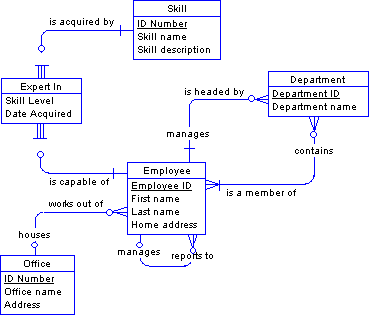







ASA SQL User's Guide
Designing Your Database
The design process
Before you implement your design, you need to make sure that it supports your needs. Examine the activities you identified at the start of the design process and make sure you can access all of the data that the activities require.
Can you find a path to get the information you need?
Does the design meet your needs?
Is all of the required data available?
If you can answer yes to all the questions above, you are ready to implement your design.
Applying steps 1 through 3 to the database for the little company produces the following entity-relationship diagram. This database is now in third normal form.

The corresponding physical data model appears below.




